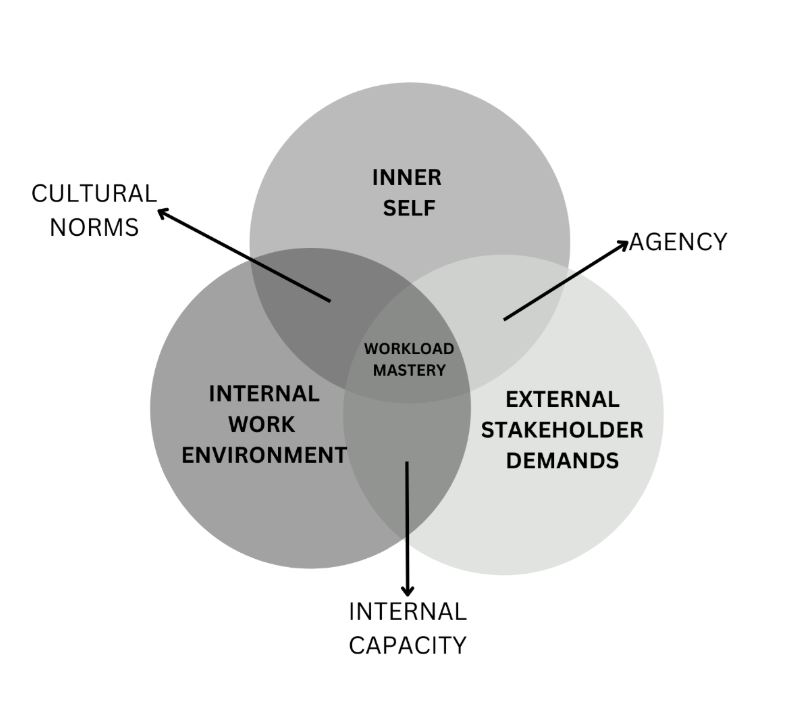Traditionally, data showed that people left leaders not workplaces.
New data received this month shows that the most frequent reason for employees to leave their organisation is excessive workload. Sure, there’s potentially a correlation if concerns aren’t being listened to, but actually poor leadership ranked the lowest in eight elements in this survey for reasons for departures.
The national survey conducted by the Australian HR Institute (AHRI) found that more than a quarter of employers reported excessive workload as the top factor driving exits.
Note employers reported this, NOT employees. I would expect that number to be significantly higher if this was employee feedback.
Where the rhetoric for years has been people don’t leave their organisation they leave their manager this represents a shift in the landscape, one I’m not at all surprised by.
When we talk about workload, what do we actually mean?
Well workload, or our work or job demands are categorised by three things:
1. The volume of work we have to do
2. The timelines in which we have to complete the work we do; and
3. The intensity of the work – mental, emotional, physical
Not all tasks are created equal and different roles by their purpose have varying levels of mental, emotional and physical demands.
In understanding why or where job demands may be impacting people it’s helpful to try and understand which of these are in play. Mostly though it’s a combination.
High (and low) Job demands are a psychosocial hazard, and I would say it is the most commonly cited cause of unmanaged and high work-related stress that I see repeatedly in my work.
There are multiple factors that contribute (see my workload mastery model below) – including:
1) Individual Factors (Inner Self)
-
People pleasing tendencies, high commitment / values alignment to the work, quest for self-actualisation, poor boundary strength, level of SMART work.
2) External Stakeholder Demands
-
Discretionary and non-discretionary non BAU.
3) Internal Work Environment
-
Norms, systems, culture, role clarity, role conflict, leadership support.

In understanding these factors, unpacking them and identifying where sustainable change can be made you can find ways to mitigate the risks of losing or burning out your key staff.
WORKLOAD is like an enormous fluffy cake. It looks like one simple thing, but there’s so many ingredients in it, and we need to consider the cooking methods, the kitchen temperature, oven quality and heat distribution. I’ll be sharing more on my bakery flavoured workload metaphor in the months to come to help people understand there is much you can do to deconstruct this issue and tweak key ingredients to make the cake more digestible.
The greatest myth is that there is
nothing you can do about workload concerns,
that it is just the way it is.
If workload (job demands) is an issue for you or your teams, reach out and let’s chat.
About Tanya
Positive Change Drives Positive Results
A keynote speaker and author of 3 books with a career spanning more than 25 years in leading people, culture, projects and change, Tanya knows what it takes to cut through the noise and create positive change at work.
Known for her highly engaging approach alongside her evidence-based programs, Tanya’s programs are highly impactful which is why her clients continue to partner with her for years.

Working with CEO’s, Senior Executives, and People, Culture and Safety Teams, Tanya’s clients often say they are:
■ Wanting to create a mentally healthy and high performing workplace but don’t know how to start
■Struggling with team dynamics and culture challenges impacting on wellbeing and productivity
■ Implementing workplace change and want to ensure best practice so that it doesn’t fail or lose engagement of their teams
■ Going through complex change and people are stressed, overwhelmed and need to get change back on a more positive track
■ Are afraid of losing good people and the organisations’ reputation when tackling a significant change
■ Wanting to ensure their people thrive, not just survive.


Recent Comments